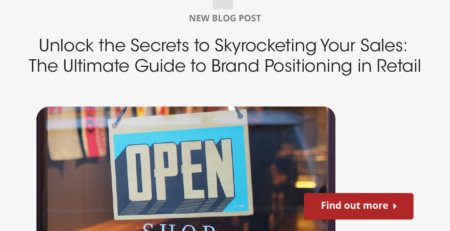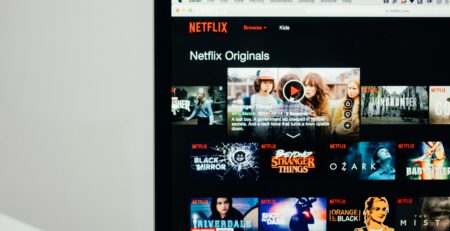How to Draw a Personal Career Map for Creatives
Setting professional goals can be challenging for creatives. Roles open to them aren’t on the typical corporate ladder and new roles are being invented as quickly as design and business can innovate to keep pace with the times. Nonetheless, setting professional goals and painting an accurate picture of your career can help set objectives and measure progress.
The most important requirement for an accurate career map is an honest idea of yourself. Not everyone has the same end goal in mind, so understanding what you really want helps eliminate career tangents or progress toward a goal that wouldn’t make you happy anyway.
If you’re already familiar with design thinking somewhat, then creating your personal career map will make sense. A career map is basically a gap analysis for your occupational trajectory. Use the tips in this guide to make a career map that will help with more accurate career planning and reduce stress throughout your professional life.
What Is A Career Map?
A career map is not just a picture of your aspirations. It also takes into account where you start from, where you are at a given moment, and what you’re lacking to get to the next stage.
Once upon a time, it was much easier to get a job with a company and move up via promotions. Many people had decades-long careers with a single business during which their responsibilities and experience grew. The best companies today use insourcing and other strategies to emulate this career path, but it’s still much rarer for people today to go through their careers without a few job changes.
Setting professional goals can take many shapes. A career map helps to organize those goals so you can prioritize and set a strategy for achieving them.
What Does a Career Map Look Like?
Visual learners, i.e. many creatives, prefer to actually draw a step-by-step chart or map to symbolize the career they envision for themselves. However, you don’t have to use this method by any means. Sometimes career maps can look more like a Pros and Cons list.
Whatever form it takes, it’s still advantageous to write down your career map. It might feel a bit silly at first, but putting your thoughts on paper will help organize them so you can sort through them and eliminate the less important ones.
Since business is subject to the whims of the market, world events, and governmental changes, no one can possibly be in complete control of their professional life. Even the best employee might have to be laid off at some point if money gets too tight. That’s why a career map should be specific in its goals but not in its job particulars.
For example, you might set a goal to take on more responsibility with your current company, which is very common for creatives who have been in one place for a long time. That’s a great goal, but make sure to give yourself space to adjust if you have to leave the company for whatever reason. A sideways move to another company or a move up in a new role elsewhere is still an achievement of that goal.

Identifying Professional Goals
We all hear stereotypical goals from the media fairly commonly. A promotion is always a good thing as far as most writers for film, TV, and radio are concerned. If you want to draw up an accurate career map for yourself, it’s best to break free from these generic goals.
If you want to do that, you have to have an honest idea of who you are and what makes you happy. Maybe you admire the CEOs on Wall Street or the billionaires in Silicon Valley, but are you really going to get there at some point?
This is less difficult for creatives than it is for comparable professionals in other industries because creatives tend to have a deeper appreciation for the work that they do. For some creatives, a promotion to management isn’t a step up because it involves less of the creative work they love.
Few people will be able to tell you what your goals should be or verify the ones you’ve set for yourself. To help you think up some accurate and achievable goals for yourself, try a few of the following thought experiments:
- Remember Your Last Achievement
When was the last time you succeeded at something? It doesn’t have to be in a professional context, it might even be completing a chore, such as cleaning the house or finally getting around to that personal project you were putting off for so long. The important thing is that you had a feeling of accomplishment at the end.
It’s important to keep such moments in mind because they’ll tell you what kinds of things make you feel satisfied. Perhaps you made money on an investment and felt nothing, while a particularly good gift to a friend made you feel great. If so, a high salary isn’t the sole key to your happiness and you should set your career goals accordingly.
- Identify Your Heroes
You can tell a lot about a person by knowing who they respect. You’ll learn even more if they can explain why.
For some, achieving status and making record amounts of money is enough of a reason to respect someone. That’s not so for some others, but most people can agree on some core professional traits that merit respect, such as dedication, skill, hard work, creativity, and cleverness.
The danger with professional heroes is that people try to copy them into their own work lives. That might not work if there’s a huge gap in duties or industries. That being said, listing admirable traits can help identify which ones you possess and how to work on improving where you’re lacking.
- Get Imaginative
Escaping the real world completely isn’t going to get you any further in your career path, but it can help you set professional goals. Try asking yourself imaginative questions. For example, if you had no bills to pay and still had your current job, what would you do?
Such a question might not give any insight about what you should do to get promoted at your current job, but you’ll find out more about yourself and what your true goals are. A few more questions to ask yourself: Do you think you have a particular gift? What gifts do your past and current coworkers possess? What would your career look like if you could change whatever you wanted?
Here’s a particularly effective question: How would you prevent yourself from getting ahead professionally if you were someone else?
How to Identify a Professional Cul-de-Sac
Some jobs are great, but others aren’t going to get you anywhere. That’s not a reflection on the job itself as much as it is an acknowledgement of the differences between people. For someone else, a mid-level job might be a perfect position, while for you nothing short of C-suite will do.
Once you understand your goals, you should be able to choose which jobs will best serve those goals. The hardest part about this is that you can’t always turn down a job if you’re in a difficult financial situation, but knowing a job won’t progress anywhere doesn’t mean you have to quit it immediately.
In fact, some of these tangent jobs are the best ones for building new skills. Because you aren’t going to move up, you can deep dive into the duties you have and come up with some imaginative solutions that will help you springboard into a better position further on down the line.
The last thing you want to do is stay in the wrong job for too long. Neither you nor the company you’re working for will benefit from that. Identifying when you’re not the right fit for your current role as early as possible will help you get to a better one faster, to everyone’s advantage.
How to Draw A Career Map
You can get a rough career map drawn out in a few simple steps.
1- The Destination
Work backward from where you want to wind up. Even if that’s a pie-in-the-sky dream job at a corporation, make that the X on your treasure map and build a path to it.
When you select your destination, don’t rely solely on prestige or fame. Identify your main professional goal and find (or imagine) the job that would best accomplish that goal. It’s fine to get really imaginative at this stage because later stages will give you a more grounded destination.
2- The Beginning
If you’ve already been working for a while, go back in time to when you first started on the career path you’re on. If you have no work experience, start from where you are.
What will get you to the next stage? If you’re already advanced in your career, even if it’s only slightly, what were the skills and knowledge that got you where you are now?
The most helpful part about selecting this beginning is you can select what of your work history was a relevant step toward your destination and what was just a job. Knowing the difference will help you choose more relevant roles in your career moving forward.
3- The Benchmarks
Creatives achieve many goals in the course of their jobs without reaching the end goal of their dream job. Set short-term goals on the way to your destination so you can stay fixated on the goal and measure progress as you go.
Benchmarks will also help keep morale up. That’s one of the biggest benefits to drawing a career map – without a path and a way to chart little victories, it’s easy to get discouraged and forget how far you’ve come.
When you’re setting professional goals on a smaller scale like this, they seem much more achievable. Even if the end result is decades away, you should take time to celebrate the milestones when you reach them.
4- The Detours
While you might not be able to predict all the twists and turns your career can take, you can build some hypothetical detours in case things don’t go quite the way you plan. A little imagination will help you be more flexible in your professional life and adjust to changes more quickly when they surprise you.
You might call this a contingency plan. By its nature, a contingency plan can’t be made in as much detail as your Plan A. However, it can be helpful to know you have options.
For example, you might have a promotion in mind as one of your benchmarks. If the role is filled by someone else, your detour might be based on a horizontal transfer with another company or skill-building to make yourself a shoo-in once the role opens up again.
5- The Cartographers
If you want to review your career map, you’re in luck. Many of the people you work with probably have their own career maps. Supervisors and managers are likely to review your career map. They’ll probably be relieved to know exactly what your professional goals are so they can help you be more effective in your role.
Coworkers are also a good resource as long as you’re not trying to outshine them in some way. As far as career maps go, just about everybody is a cartographer in some way.
Tips for Drawing Your Personal Career Map
For the most realistic career planning, use some of the following tips:
- Revisit Your Map
Creative work is usually fast-paced. It’s important to note when you’ve reached benchmarks and it’s equally important to make adjustments to your career map when things change.
Perhaps part of your pathway has closed, or perhaps you have a growing desire to specialize in a certain aspect of your field. Whatever the case may be, make sure to return to your map when needed. Remember that it isn’t a rigid, fixed map, but rather a tool for charting your career.
- Research
Setting benchmark goals and identifying which promotions and jobs will help you achieve the goals you set for yourself requires research. This is the part of the map that needs to be fairly realistic. We all think we know what it would be like to be the millionaire CEO of a company, but the picture we have in our minds is likely flawed.
Research can come from people, the internet, biographies, or any other source of information from professionals in a similar line of work. The best research will be experience, so try to find ways you can get a firsthand taste of the jobs you want.
- Account for Education
Many creatives think they’re stuck at a roadblock on their career maps and become frustrated. Education and skill-building is the key to avoid standing still. If you’re flexible enough to progress in directions other than the ones you expected, learning new skills or specializing can help you clear hurdles.
When you’re building possible detours in your career planning, continuing education is the best tool. Whatever barrier you might face, building new skills will help you work around them. If you really want to get around roadblocks quickly, continue building your skillset at all times so you can make a lateral move when you need to.
- Network
The principle way a career map differs from a normal map is that you don’t actually know the path your career might take. Drawing your own personal map will help you be as prepared as possible, but if you want new doors to open up to you, the best thing you can do for yourself is network consistently.
Put your name out there through online resources like LinkedIn and social media. Showcase your creativity and professional imagination by posting interesting videos and articles related to your profession. Seek out continuing education opportunities like seminars and conferences so you can see what the competition is up to.

Conclusion:
Drawing a personal career map for yourself helps when you’re setting professional goals and also gives you a metric for measuring your successes as you progress. Even if you don’t draw an actual path, the map metaphor will help organize your career planning and get you through roadblocks when they appear.
Creative jobs are constantly changing and growing as businesses employ different modes of design thinking for different purposes. If you plan your career properly, you’ll be prepared for whatever the future holds.












